Pad Thai
This post may contain affiliate links. Read my full disclosure policy.
Got a taste for Thai? Using easy-to-find ingredients and my simple recipe, you can create restaurant-quality pad Thai right in your own kitchen!
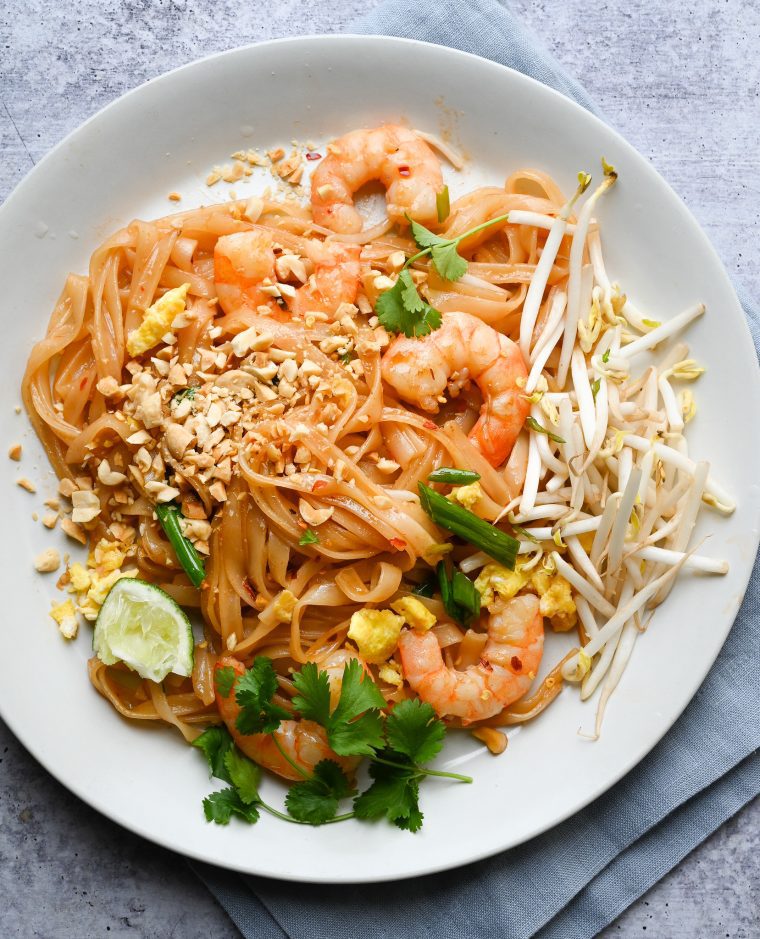
Pad Thai is a popular stir-fried noodle dish that originated in Thailand, where it’s commonly enjoyed as a quick and easy street food. Today, it’s a popular Thai restaurant dish in many parts of the world. If you love this noodle dish as much as I do, you’ll be pleased to know that it’s surprisingly easy to make in your own kitchen.
While traditional pad Thai calls for a daunting list of hard-to-find ingredients, from tamarind liquid and dried shrimp to pickled white radishes and garlic chives, a simplified “Westernized” version can be just as delicious with a few ingredient substitutions (yes, that’s why the recipe strangely calls for ketchup!).
Table of Contents
“Made it last night and it is the best pad Thai ever! Easy to make and customize. Thank you!”
What You’ll Need To Make Pad Thai
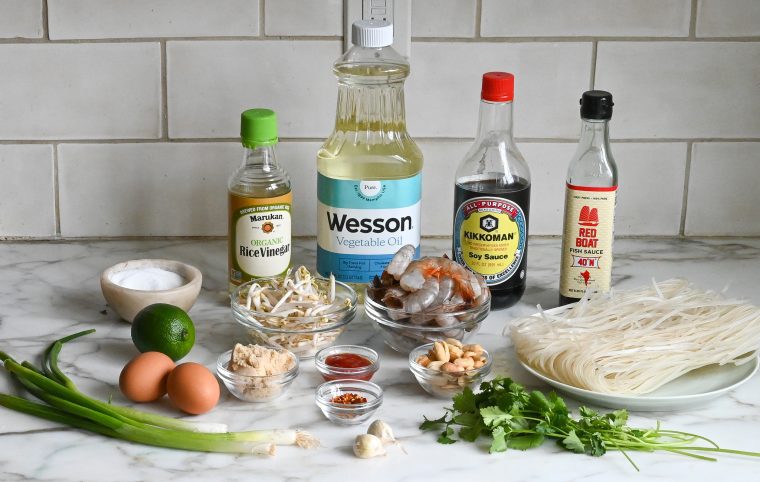
- Flat rice noodles: Serve as the base of the dish, providing texture and substance. Available in the Asian or Thai food section of most large supermarkets. (These noodles are also used in dishes like pho and Thai chicken and rice noodle soup.)
- Eggs: Scrambled into the noodles, adding protein and richness.
- Fish sauce: Contributes a salty, umami depth essential to the dish’s authentic flavor. Look for a brand from Thailand or Vietnam, and don’t worry about buying a large bottle—it keeps forever.
- Soy sauce: Adds additional savory notes and color to the noodles.
- Rice vinegar: Introduces a mild acidity, balancing the dish’s flavors.
- Ketchup: Used as a convenient substitute for tamarind paste, offering a hint of sweetness and tang.
- Light brown sugar: Adds sweetness, balancing the savory and acidic elements.
- Shrimp: Provides a quick-cooking protein, making the dish more hearty and flavorful.
- Garlic and scallions: Add aromatic depth to the dish.
- Peanuts: Offer a crunchy texture and nutty flavor.
- Bean sprouts: Add freshness and a crisp texture.
- Jump to the printable recipe for precise measurements
Step-by-Step Instructions
Step 1: Soak the Rice Noodles
Bring a large pot or wide skillet of water to a boil.
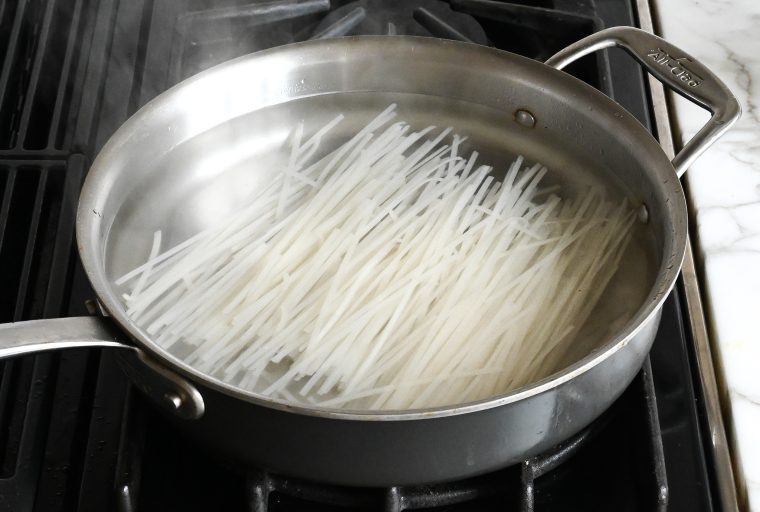
Off the heat, add the noodles. Briefly swish them around to separate them, then let sit, stirring occasionally to prevent sticking, until the noodles are soft and pliable but still not tender, 5 to 10 minutes.
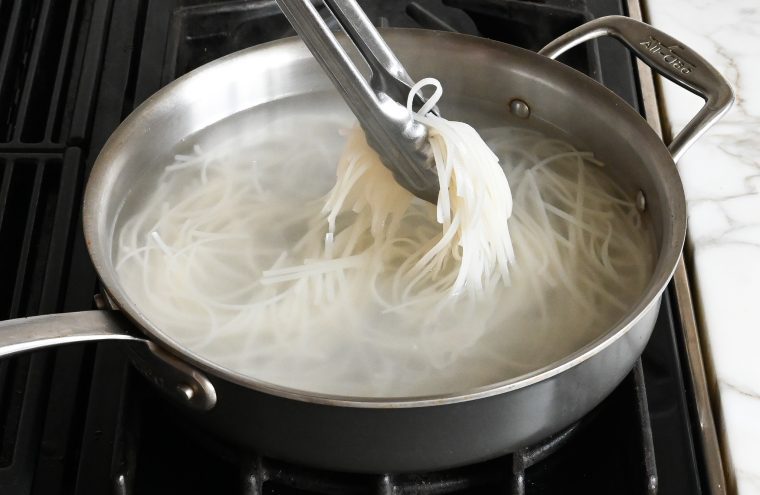
Drain and rinse well with cold water. Set aside.
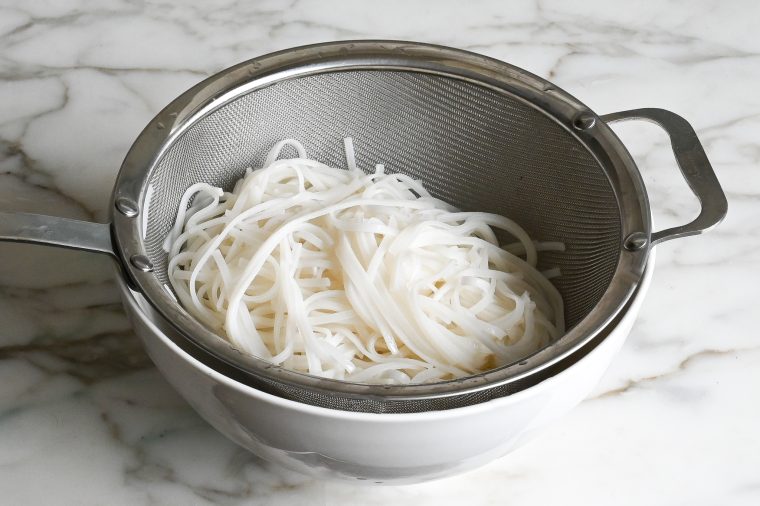
Step 2: Cook the Pad Thai
In a small bowl, beat the eggs with a pinch of salt. Set aside.
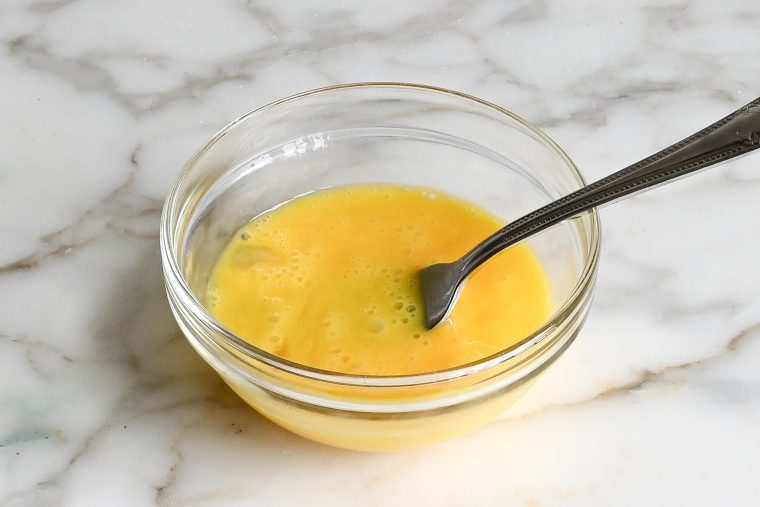
Make the sauce: In a medium bowl, whisk together the water, fish sauce, soy sauce, vinegar, ketchup, sugar, and red pepper flakes. Set aside.
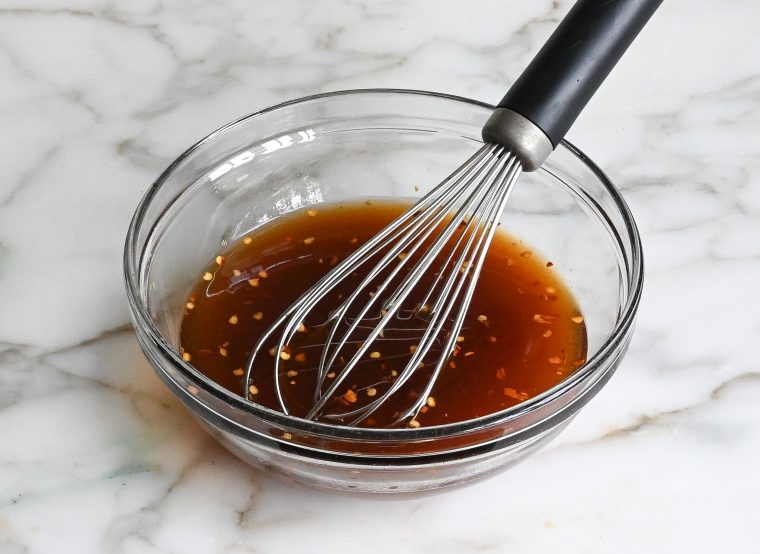
Heat 2 tablespoons of the oil in a large nonstick pan or wok over medium-high heat. Add the shrimp and season with ⅛ teaspoon salt. Cook, stirring often, for two minutes. Add the garlic and light green scallions and cook, stirring constantly, until softened and the shrimp are cooked through, about 1 minute more.
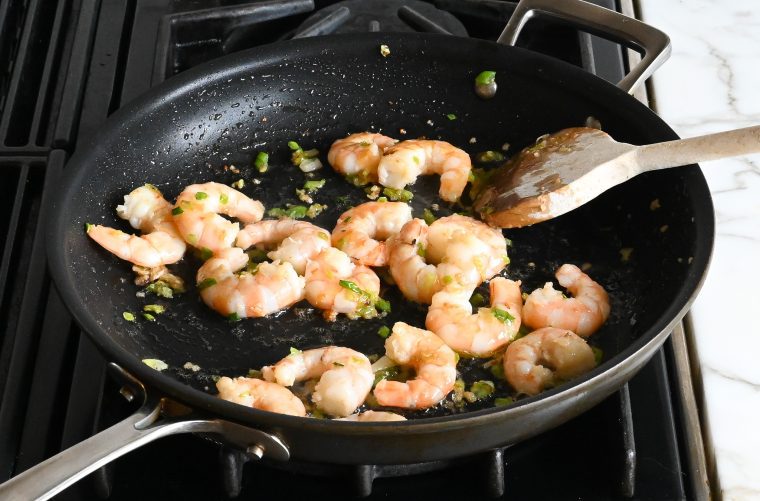
Transfer the shrimp, garlic, and scallions to a large plate, using a rubber spatula to scrape the pan clean. To the pan, add 1 teaspoon of oil to the hot pan. Add the eggs and scramble until cooked through, 1 to 2 minutes. Transfer the eggs to the plate with the shrimp.
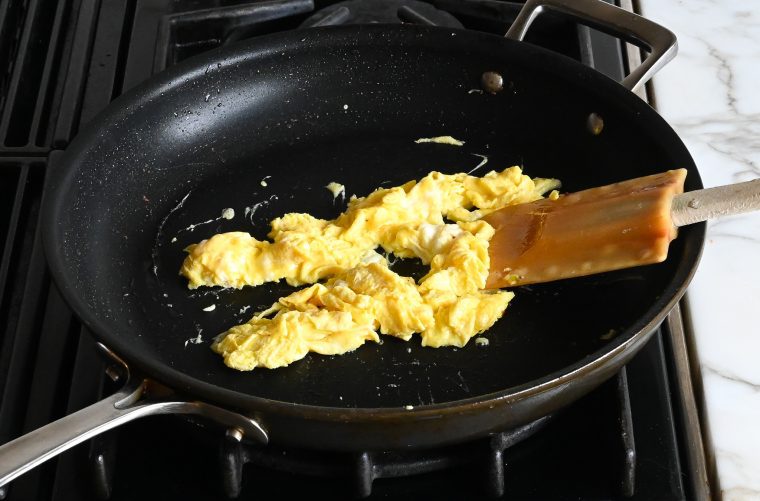
Add 2 tablespoons of oil to the hot pan. Place the drained noodles in the pan, along with the sauce mixture. Cook, tossing the noodles gently so as not to break them, until the liquid is absorbed by the noodles and the noodles are cooked through, a few minutes. If the noodles are still firm to the bite when the sauce is absorbed, add a few tablespoons of water and continue cooking.
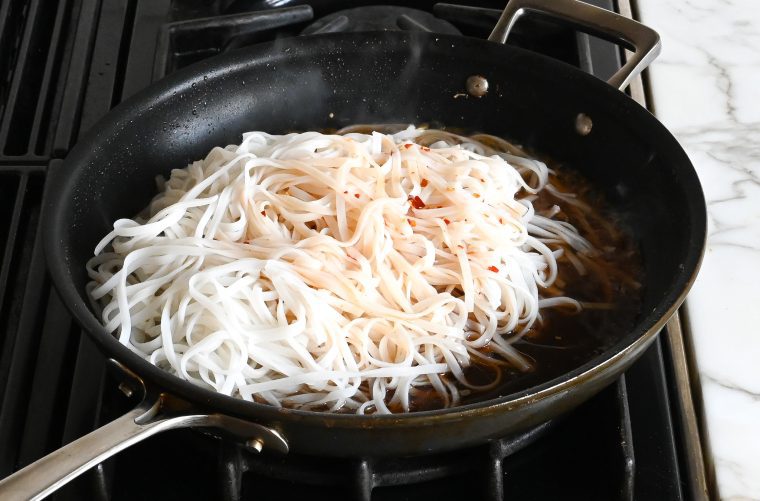
Add the contents of the plate and the dark green scallions to the noodles and toss gently to combine, until everything is warmed through.
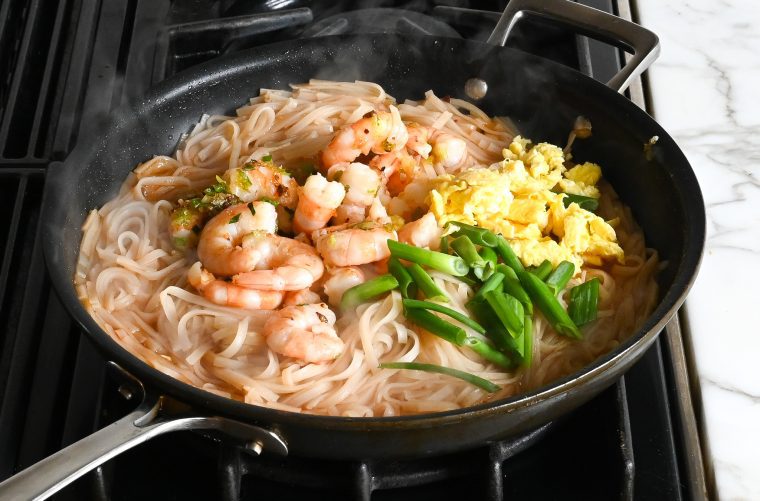
Taste and adjust seasoning if necessary. Transfer to a serving platter and top with peanuts, bean sprouts, and cilantro (if using). Serve with lime wedges, if desired.
Frequently Asked Questions
Unlike what-based pasta, which is typically boiled until al dente, rice noodles are usually soaked in hot water off the heat. After soaking until they’re just soft and pliable bit still not tender, the noodles are then drained and quickly rinsed to stop the cooking process and remove excess starch. This prepares them perfectly for stir-frying for dishes like pad Thai. This method prevents them from becoming too soft or mushy.
Fish sauce is essential in achieving the authentic flavor for pad Thai. However, if you’re vegetarian or allergic to fish, you can substitute fish sauce with a combination of soy sauce and a little lime juice for tanginess. This won’t replicate the exact flavor of fish sauce but will work as good substitute.
Authentic pad Thai is made with tamarind paste, which gives the dish its distinct tangy-sweet flavor. It is available at Asian markets or in the international aisle of some grocery stores. For the best results, consider finding a recipe specifically designed to incorporate authentic ingredients like tamarind paste.
Absolutely, you can easily substitute the shrimp with various other proteins. Popular choices include chicken and tofu, both of which can be thinly sliced and stir-fried just like the shrimp. Just make sure that your chosen protein is fully cooked before it’s mixed with the noodles and sauce.
Pad Thai Video Tutorial

You May Also Like
Pad Thai
Got a taste for Thai? Using easy-to-find ingredients and my simple recipe, you can create restaurant-quality pad Thai right in your own kitchen!
Ingredients
- 8 ounces flat rice noodles (linguini or fettuccini width)
- 2 large eggs, beaten
- ¼ cup + 2 tablespoons water
- 2½ tablespoons fish sauce
- 1 tablespoon soy sauce
- 1 tablespoon rice vinegar
- 1½ tablespoons ketchup
- ¼ cup (packed) light brown sugar
- Heaping ¼ teaspoon crushed red pepper flakes
- 4 tablespoons + 1 teaspoon vegetable oil, divided
- ¾ pound large (31/35) shrimp, peeled and deveined, thawed if frozen
- Salt
- 2 cloves garlic, minced
- 3 scallions, light parts thinly sliced, dark green parts cut into 1-inch pieces
- ¼ cup dry roasted salted peanuts, coarsely chopped
- 1 cup bean sprouts
- ¼ cup chopped fresh cilantro (optional)
- Lime wedges, for serving (optional)
Instructions
- Bring a large pot or wide skillet of water to a boil. Off the heat, add the noodles. Briefly swish them around to separate them, then let sit, stirring occasionally to prevent sticking, until the noodles are soft and pliable but still chewy to the bite, 5 to 10 minutes. Drain and rinse well with cold water. Set aside.
- In a small bowl, beat the eggs with a pinch of salt. Set aside.
- Make the sauce: In a medium bowl, whisk together the water, fish sauce, soy sauce, vinegar, ketchup, sugar, and red pepper flakes. Set aside.
- Heat 2 tablespoons of the oil in a large nonstick pan or wok over medium-high heat. Add the shrimp and season with ⅛ teaspoon salt. Cook, stirring often, for two minutes. Add the garlic and light green scallions and cook, stirring constantly, until softened and the shrimp are cooked through, about 1 minute more. Transfer the shrimp, garlic, and scallions to a large plate, using a rubber spatula to scrape the pan clean.
- Add 1 teaspoon of oil to the hot pan. Add the eggs and scramble until cooked through, 1 to 2 minutes. Add to the plate with the shrimp.
- Add 2 tablespoons of the oil to the hot pan. Add the drained noodles to the pan, along with the sauce mixture. Cook, tossing the noodles gently so as not to break them, until the liquid is absorbed by the noodles and the noodles are cooked through, a few minutes. If the noodles are still firm to the bite when the sauce is absorbed, add a few tablespoons of water and continue cooking. Add the contents of the plate and the dark green scallions to the noodles and toss gently to combine, until everything is warmed through. Taste and adjust seasoning if necessary. Transfer to a serving platter and top with peanuts, bean sprouts, and cilantro (if using). Serve with lime wedges, if desired.
Nutrition Information
Powered by ![]()
- Per serving (4 servings)
- Calories: 579
- Fat: 23 g
- Saturated fat: 3 g
- Carbohydrates: 66 g
- Sugar: 17 g
- Fiber: 3 g
- Protein: 28 g
- Sodium: 1,411 mg
- Cholesterol: 230 mg
This website is written and produced for informational purposes only. I am not a certified nutritionist and the nutritional data on this site has not been evaluated or approved by a nutritionist or the Food and Drug Administration. Nutritional information is offered as a courtesy and should not be construed as a guarantee. The data is calculated through an online nutritional calculator, Edamam.com. Although I do my best to provide accurate nutritional information, these figures should be considered estimates only. Varying factors such as product types or brands purchased, natural fluctuations in fresh produce, and the way ingredients are processed change the effective nutritional information in any given recipe. Furthermore, different online calculators provide different results depending on their own nutrition fact sources and algorithms. To obtain the most accurate nutritional information in a given recipe, you should calculate the nutritional information with the actual ingredients used in your recipe, using your preferred nutrition calculator.
Gluten-Free Adaptable Note
To the best of my knowledge, all of the ingredients used in this recipe are gluten-free or widely available in gluten-free versions. There is hidden gluten in many foods; if you're following a gluten-free diet or cooking for someone with gluten allergies, always read the labels of your ingredients to verify that they are gluten-free.

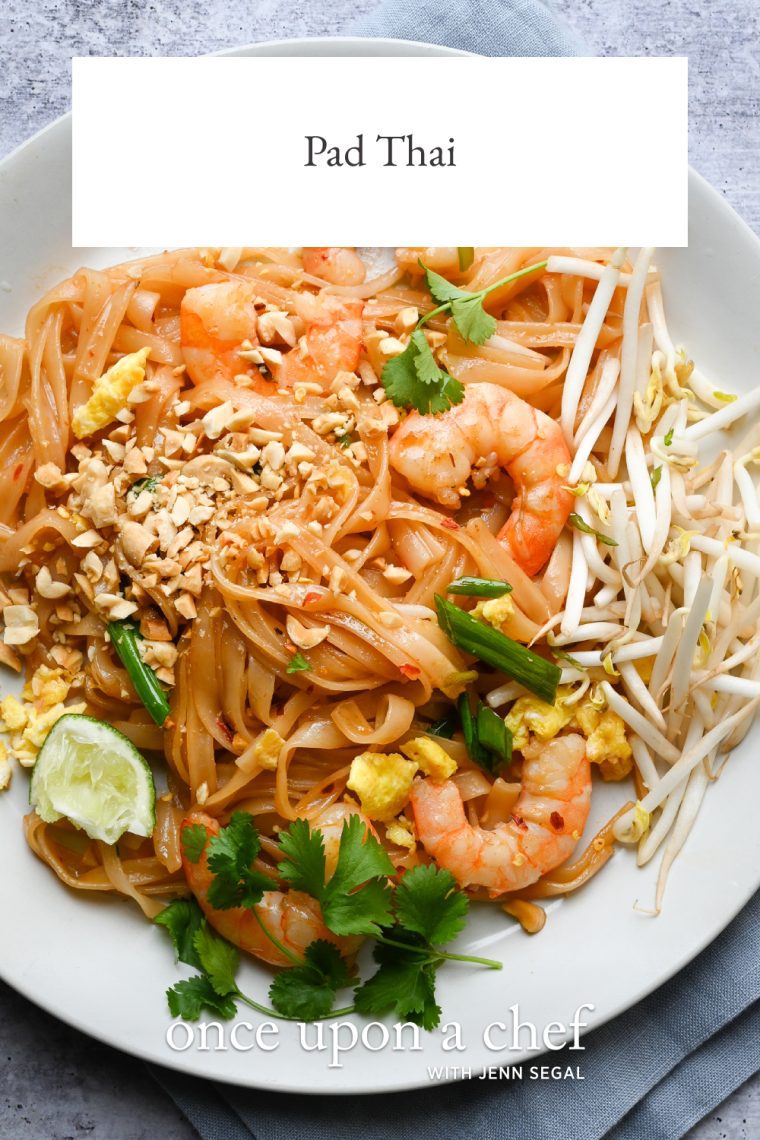
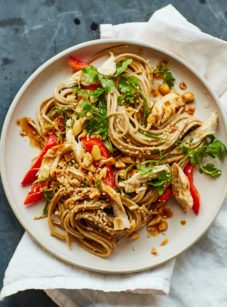
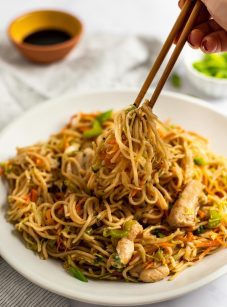
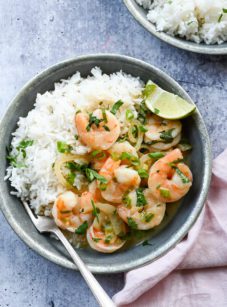
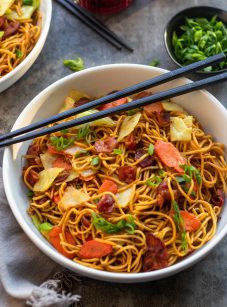
Excellent recipe and so easy. I must have made this recipe at least 10 times, and it is always the best. Thank you so much!
Did your shrimp pad Thai recipe originally include broccoli? Or is that a different recipe? I loved it and can’t find it.
Hi Penny, Yes, the original recipe did have broccoli and I changed it recently. I happen to think this is an improvement over the other one, but will email you the original. 🙂
Pad Thai does not have ketchup in it. This is NOT pad thai
You obviously didn’t read the preamble.
I want to make this with chicken. Would you recommend browning chicken pieces (then removing them) and then throwing them in at the same time as the shrimp? Thanks!
Yep 🙂
This was great! I added snow peas, added nice color and crispiness. Per your other instructions, removed it from the pan to the set-aside plate of shrimp, etc after barely swishing them around the wok so they stayed crispy. The steps of what to cook when, then set aside, made everything stay perfectly cooked. My husband said “I’m not crazy about pad thai” when I started cooking it. Then he started eating — “This is GOOD!”
Thanks again, Jenn, for another great recipe!
I love tamarind. What amount would you substitute for ketchup.
Jan Smith
Hi Jan, I’d use the same amount. Hope you enjoy!
Thank you!
Delicious. After 3 times making it, here are my preferences: I add chicken and reduce the ketchup to 1/2 tablespoon, no sprouts. My husband, a Thai food lover, had 2 large plates tonight 🙂 Thank you!
This was so good! I swapped the shrimp for tofu and it was still amazing!
Better than any Pad Thai I can find in my city! My toddler agrees – he licked the plate clean for the first time after eating it. Thank you for that “first,” Jenn! If you ever have a chance to make a pad see ew recipe, we are all ears 🙂
I hadn’t made this in a while, and when I opened up the recipe, I noticed that the broccoli had been taken out. I like putting the broccoli -or any other vegetable for that matter-because it makes for a nice one dish meal. I lightly steamed some broccoli florets and then added them at the end. I read the comments about the new sauce, but I have to agree with Jennifer. The new sauce is tastier and easier to make. It was a lot more time consuming to mix in the peanut butter until you got the right consistency. I will make this again soon. It’s shrimp season where I live!